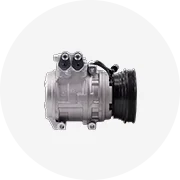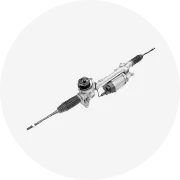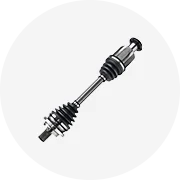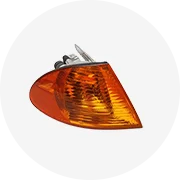Types of Alloys and Their Applications
An alloy is a material formed by combining two or more metallic elements, often with non-metallic components, to achieve enhanced properties such as increased strength, corrosion resistance, or thermal stability. These engineered materials play a crucial role in modern manufacturing, construction, aerospace, electronics, and many other industries.
Below are the most commonly used types of alloys, each tailored for specific performance characteristics and applications:
Carbon Steel
Carbon steel is primarily composed of iron and carbon, with minimal amounts of other elements. The carbon content determines its hardness and strength. It's widely used where high tensile strength is essential.
Advantages
- High strength and durability
- Affordable compared to other alloys
- Excellent machinability
- Widely available
Limitations
- Prone to rust without coating
- Heavier than alternatives like aluminum
Best for: Structural frameworks, bridges, pipelines, automotive frames
Cast Iron
Cast iron contains higher carbon content (2–4%) and silicon, making it excellent for casting into complex shapes. It’s known for its wear resistance and heat retention.
Advantages
- Excellent heat retention
- Good wear resistance
- Inexpensive to cast
- Durable under compressive loads
Limitations
- Brittle and prone to cracking
- Heavy compared to other metals
Best for: Engine blocks, cookware, manhole covers, pipes
Stainless Steel
Stainless steel is an alloy of iron, chromium (minimum 10.5%), and often nickel. Its standout feature is its corrosion resistance due to the formation of a passive oxide layer on the surface.
Advantages
- High corrosion resistance
- Easy to clean and maintain
- Hygienic and food-safe
- Available in various finishes
Limitations
- Higher cost than carbon steel
- Can be difficult to weld without proper technique
Best for: Kitchen appliances, surgical tools, chemical equipment, architectural features
Aluminum Alloys
Aluminum alloys combine aluminum with elements like copper, magnesium, and zinc. They offer a great strength-to-weight ratio and are highly resistant to corrosion.
Advantages
- Lightweight yet strong
- Corrosion-resistant
- Good thermal and electrical conductivity
- Recyclable and environmentally friendly
Limitations
- Lower melting point than steel
- More expensive per unit weight
Best for: Aircraft parts, vehicle bodies, window frames, consumer electronics
Titanium Alloys
Titanium alloys are made by combining titanium with aluminum, vanadium, and other elements. Known for their exceptional strength-to-weight ratios and corrosion resistance, they're ideal for extreme environments.
Advantages
- High strength-to-weight ratio
- Excellent corrosion resistance
- Biocompatible (used in implants)
- Heat resistant at high temperatures
Limitations
- Very expensive to produce
- Difficult to machine and weld
Best for: Aerospace components, medical implants, marine hardware
Copper Alloys
Copper alloys include brass (copper + zinc), bronze (copper + tin), and others. They’re valued for their electrical conductivity, thermal properties, and aesthetic appeal.
Advantages
- High electrical and thermal conductivity
- Corrosion and biofouling resistance
- Attractive appearance
- Easy to form and join
Limitations
- Softer than steel or titanium
- Relatively high cost
Best for: Electrical wiring, plumbing fixtures, musical instruments, decorative hardware
Magnesium Alloys
Magnesium alloys are among the lightest structural alloys, typically combined with aluminum, zinc, and manganese. They are ideal for reducing weight while maintaining structural integrity.
Advantages
- Extremely lightweight
- Good damping capacity
- Excellent strength-to-weight ratio
- Easy to cast and machine
Limitations
- Poor corrosion resistance unless coated
- Low fatigue strength
Best for: Automotive parts, aircraft components, portable electronics
Nickel Alloys
Nickel alloys combine nickel with chromium, iron, and copper to create materials that perform well in harsh environments, including high-temperature and corrosive conditions.
Advantages
- Outstanding corrosion and oxidation resistance
- Retains strength at high temperatures
- Resistant to acids and alkalis
- Used in aggressive environments
Limitations
- Expensive compared to common steels
- Challenging to fabricate
Best for: Chemical processing plants, gas turbines, nuclear reactors
Superalloys
Superalloys are advanced materials based on nickel, cobalt, or iron designed for extreme mechanical stress and high temperatures. They are essential in jet engines and industrial turbines.
Advantages
- Exceptional high-temperature strength
- Excellent creep and fatigue resistance
- Resilient in oxidative and corrosive environments
Limitations
- Very expensive to manufacture
- Require specialized fabrication techniques
Best for: Jet engine blades, rocket nozzles, power generation turbines
| Type | Key Properties | Weight Consideration | Common Uses | Cost Level |
|---|---|---|---|---|
| Carbon Steel | Strength, affordability | Heavy | Buildings, vehicles | Low |
| Cast Iron | Heat retention, wear resistance | Heavy | Cookware, machinery | Low |
| Stainless Steel | Corrosion resistance, hygiene | Moderate | Kitchenware, surgery | Medium |
| Aluminum Alloys | Lightweight, conductive | Light | Aerospace, electronics | Medium |
| Titanium Alloys | High strength, biocompatibility | Moderate | Medical, aviation | High |
| Copper Alloys | Conductive, decorative | Moderate | Electrical, architecture | Medium |
| Magnesium Alloys | Ultra-light, dampening | Very Light | Automotive, gadgets | Medium-High |
| Nickel Alloys | Heat & corrosion resistance | Moderate | Chemical, energy | High |
| Superalloys | Extreme temperature performance | Varies | Aerospace, turbines | Very High |
Expert Tip: When selecting an alloy for your application, consider not only mechanical properties but also environmental exposure, maintenance requirements, and lifecycle costs. Sometimes investing more upfront leads to long-term savings and reliability.
Specifications and Maintenance of Alloy Wheels
Key Specifications to Consider When Purchasing Alloy Wheels
When shopping for alloy wheels for sale, it's important to understand the technical and aesthetic specifications that influence performance, durability, and appearance. Below are the primary factors to consider:
Style and Appearance
Alloy wheels are not just functional components—they significantly enhance a vehicle’s visual appeal. Available in countless designs, they allow drivers to personalize their vehicles. Finishes such as painted, polished, or machined surfaces offer options for both subtle elegance and bold statements.
Whether you prefer a sleek chrome finish for luxury or a matte black look for sportiness, the style and finish of alloy wheels play a crucial role in complementing your car's overall design language.
Construction Materials
Most alloy wheels are made from a blend of aluminum and other lightweight metals like magnesium. This combination offers a balance between strength and reduced unsprung weight, which improves handling, acceleration, and braking efficiency.
The casting method—whether gravity cast, low-pressure cast, or forged—also affects performance. Forged alloys are typically stronger and lighter but come at a higher cost, making them popular among performance enthusiasts.
Size Dimensions
Alloy wheels are available in a wide range of sizes, primarily measured by diameter (commonly 15 to 22 inches) and width (typically 6 to 12 inches). The correct size must match the vehicle's specifications to ensure proper fitment with brakes, suspension, and fender clearance.
Larger diameters may offer improved aesthetics and grip but can result in a harsher ride and increased wear on tires and suspension components if not properly matched to the vehicle and driving conditions.
Finish Options
Surface treatments include powder coating, chrome plating, clear coat protection, and custom paint finishes. Each option provides different levels of durability and maintenance requirements.
Chrome finishes are highly reflective and stylish but require more care to prevent corrosion, while painted finishes offer versatility and can be easily refreshed if scratched.
Design Patterns
Alloy wheel designs vary widely, including split-spoke, multi-spoke, Y-spoke, mesh, and monoblock styles. Each design has unique characteristics that affect both aerodynamics and aesthetics.
For example, Y-spoke designs are often associated with modern, high-performance vehicles, while classic multi-spoke patterns evoke a timeless, luxurious feel. Choosing the right pattern depends on personal preference and the intended use of the vehicle.
| Specification | Importance | Selection Tips |
|---|---|---|
| Offset and Backspacing | High | Ensure correct offset to avoid rubbing against fenders or suspension components. Refer to manufacturer guidelines or consult a professional installer. |
| Bolt Pattern | Very High | Match the bolt pattern exactly to your vehicle hub to ensure secure mounting and safety. |
| Weight | Medium | Lighter wheels improve fuel economy and responsiveness. Look for forged or flow-formed alloys for optimal weight reduction. |
| Load Rating | Medium-High | Choose wheels rated for your vehicle's weight capacity to avoid stress fractures or failure under load. |
Essential Maintenance Practices for Alloy Wheels
To maximize the lifespan and appearance of your alloy wheels, regular maintenance is essential. Here are key practices to follow:
Important: Always inspect and maintain all four wheels simultaneously. Uneven wear or mismatched maintenance can lead to imbalance issues, affecting handling and safety. If any structural damage is detected, stop using the wheel immediately and consult a professional mechanic or wheel specialist.
How to Choose Alloy Materials
Selecting the right alloy for your specific application requires careful evaluation of multiple factors including mechanical properties, environmental conditions, and intended use. Whether you're choosing alloy wheels, steel pipes, tool steels, construction materials, or metallurgical additives, understanding these key considerations will help ensure optimal performance and longevity.
Alloy Wheels Selection
When selecting alloy wheels, it's essential to consider both aesthetic and functional requirements. The choice impacts not only the vehicle's appearance but also its handling characteristics and overall performance.
- Vehicles specifications: Match wheel dimensions precisely to your car's make and model for proper fitment
- Driving style: Performance drivers benefit from lightweight forged alloys, while daily commuters may prefer cast aluminum for cost-effectiveness
- Road conditions: Rough roads require thicker, more durable wheel designs to resist damage
- Size optimization: Larger diameter wheels (18-22") offer improved aesthetics and handling but may compromise ride comfort
Performance tip: A low aspect ratio tire (45 or below) paired with appropriately sized alloy wheels enhances cornering precision and steering response
Alloy Steel Pipes Considerations
Choosing the right alloy steel pipe involves understanding material composition and required performance characteristics for the specific application environment.
- Chemical composition: Chromium-molybdenum alloys provide excellent strength at high temperatures
- Mechanical properties: Evaluate tensile strength, yield strength, and elongation requirements
- Environmental resistance: Corrosion-resistant alloys are critical for chemical processing applications
- Manufacturing standards: Ensure compliance with ASTM/ASME or ISO specifications
Safety consideration: Always verify pressure ratings and temperature tolerances exceed maximum expected operating conditions
Alloy Tool Steel Requirements
Proper selection of alloy tool steel depends on the specific demands of the manufacturing process and production environment.
- High-speed applications: High-Speed Steel (HSS) maintains hardness up to 600°C during cutting operations
- Cold work tools: D2 tool steel offers excellent wear resistance for stamping and forming dies
- Heat treatment: Optimal Rockwell hardness varies by application (typically between HRC 58-65)
- Toughness needs: S7 shock-resistant steel for impact applications
Durability factor: Proper heat treatment can extend tool life by 200% or more compared to standard carbon steel equivalents
Aluminum Alloys in Construction
Selecting appropriate aluminum alloys for construction requires balancing structural requirements with environmental challenges.
- Common series: 6063-T6 for architectural extrusions, 5083-H111 for marine environments
- Corrosion protection: Anodized finishes enhance durability in coastal areas
- Structural applications: 7075-T6 provides aerospace-grade strength for critical components
- Weldability: 5xxx series alloys perform best in welded structures
Design consideration: Thermal expansion coefficients should be factored into large-scale installations
Metallurgical Alloy Additives
Understanding the effects of different alloying elements helps create materials with optimized performance characteristics.
- Vanadium: Enhances strength-to-weight ratio and improves fatigue resistance
- Nickel: Increases toughness at low temperatures and improves corrosion resistance
- Manganese: Improves hardenability and wear resistance
- Chromium: Adds hardness, corrosion resistance, and high-temperature strength
Technical note: Careful control of additive percentages is crucial - excessive amounts can lead to brittleness or other undesirable properties
Application-Specific Recommendations
Different industries require specialized alloy formulations tailored to their unique operational demands.
- Aerospace: Titanium alloys (Ti-6Al-4V) for high-strength, lightweight components
- Automotive: Magnesium alloys for interior structural parts where weight reduction matters
- Marine: Copper-nickel alloys for seawater piping systems
- Electronics: Beryllium copper for spring contacts requiring conductivity
Industry insight: Always consult with material engineers when transitioning between applications
Selection Advice: When uncertain about specific requirements, begin with industry-standard alloys proven in similar applications before exploring customized solutions. This approach balances performance expectations with reliability while allowing for future optimization based on actual usage data.
| Application Type | Recommended Alloy Series | Key Properties | Typical Use Cases |
|---|---|---|---|
| Alloy Wheels | 6061 Aluminum | Lightweight, corrosion resistant, good thermal conductivity | Passenger vehicles, motorsports applications |
| Steel Pipes | ASTM A335 P11/P22 | High temperature strength, creep resistance | Power plants, refineries, petrochemical facilities |
| Tool Steels | H13, D2, M2 | High hardness, wear resistance, thermal stability | Injection molds, cutting tools, forging dies |
| Construction | 6063-T6, 5083-H111 | Good formability, weldability, corrosion resistance | Window frames, marine structures, architectural components |
| Metallurgy | Various additives | Customizable properties through element combinations | All metal manufacturing processes |
How to DIY and Replace Alloy Wheels
Replacing or repairing alloy wheels is a practical skill that can save you time and money while ensuring your vehicle maintains its performance and aesthetic appeal. Whether you're dealing with minor scratches or a complete wheel replacement, this comprehensive guide will walk you through the process step by step.
Safety Warning: Always work on a stable surface and ensure the vehicle is properly supported before removing any wheel. Never rely solely on a jack—use jack stands for safety. Wear protective gloves and eyewear when handling tools and chemicals.
Tools and Materials Required
- Sandpaper (medium and fine grit)
- Clean cloths (lint-free preferred)
- Masking tape (to protect surrounding areas)
- Primer (for proper paint adhesion)
- Alloy wheel paint (color-matched to your original finish)
- Clear coat (UV-protective for long-lasting shine)
- Wheel repair kit (includes filler compounds and polishing pads for scuffs and curb rash)
- Tire iron (for loosening/tightening lug nuts)
- Jack (capable of lifting your vehicle's weight)
- Lug nut key (specific to your wheel type)
- New wheel (ensure it's compatible with your vehicle's specifications)
- Lever for dismounting the tire (optional but helpful)
- Inflation device or hand pump (to maintain proper tire pressure)
- New valve core (recommended during tire changes)
DIY Tip: When selecting replacement alloy wheels, verify bolt pattern, offset, and diameter compatibility with your vehicle. Mismatched specs can lead to improper fitment and safety hazards.
Step-by-Step Guide to Alloy Wheel Repair and Replacement
- Preparation
Park your vehicle on a level, stable surface and engage the parking brake. Turn off the engine and allow it to cool if recently driven. Begin by thoroughly cleaning the alloy wheel using soap and water to remove brake dust, dirt, and grime. This prevents contaminants from interfering with repairs or entering sensitive brake components during the process.
Before lifting the car, use the lug nut key to slightly loosen all the lug nuts securing the wheel to the hub. Do not remove them yet—just break their tension. Apply masking tape around the tire and adjacent rim edges to protect the polished surfaces from accidental scratches during removal and installation.
- Lifting the Vehicle
Position the jack under the designated jacking point near the wheel you’re working on (refer to your owner’s manual for safe locations). Slowly raise the vehicle until the wheel is just off the ground. For added safety, place jack stands under the frame and lower the vehicle onto them.
Once securely lifted, fully remove the lug nuts and carefully take the old wheel off the hub. Inspect the wheel studs and hub for damage or corrosion. If replacing the wheel entirely, set the new one in place now.
- Installing the New Wheel
Align the new alloy wheel with the wheel studs and gently push it onto the hub until it seats properly. Begin threading the lug nuts back on by hand to avoid cross-threading. Once all are started, use a tire iron to snug them down in a crisscross pattern. This ensures even pressure distribution and prevents warping of the rotor or hub.
Lower the vehicle to the ground slowly and fully tighten the lug nuts again following the same crisscross sequence. Use a torque wrench to tighten them to the manufacturer’s specified torque value (typically between 80–120 ft-lbs depending on your vehicle).
- Tire Inflation and Valve Core Replacement
If the new wheel comes without a mounted tire, have the tire professionally mounted or use a tire lever to mount it yourself. After mounting, install a new valve core into the tire stem. This ensures a proper seal and helps prevent slow leaks over time.
Inflate the tire to the recommended pressure found in your vehicle’s manual or on the driver’s side door jamb sticker. Use an accurate pressure gauge and inflation device to achieve the correct PSI. Recheck the pressure after driving a short distance to ensure no leakage has occurred.
- Finishing Touches and Safety Check
Once the wheel is installed and inflated, double-check all lug nuts for tightness. Test the vehicle at low speed initially and listen for unusual noises or vibrations. If you performed any cosmetic repairs earlier, allow the paint and clear coat sufficient time to cure before exposing the wheel to harsh conditions.
Store any leftover materials and tools safely. Consider having a professional mechanic inspect your work if this is your first time performing a full alloy wheel replacement.
| Stage | Key Tasks | Common Mistakes | Recommended Tools |
|---|---|---|---|
| Preparation | Loosening lugs, cleaning wheel, applying masking tape | Not checking for wheel compatibility, skipping cleaning steps | Lug nut key, cloth, soapy water, masking tape |
| Lifting | Proper jack placement, secure support | Relying only on jack, incorrect jacking points | Jack, jack stands, owner’s manual |
| Installation | Alignment, tightening pattern, torque check | Cross-threading, uneven tightening | Tire iron, torque wrench |
| Inflation | Valve core replacement, pressure setting | Overinflation, incorrect valve use | Air compressor, pressure gauge, valve tool |
| Final Check | Inspection, test drive, leak check | Skipping re-torque after initial drive | Gloves, flashlight, torque wrench |
Professional Tip: If you're repairing minor scratches or curb rash on your alloy wheels, sand evenly with progressively finer grits, apply primer, then color-matched paint, and finish with a UV-resistant clear coat. Allow each layer to dry completely for best results.
Frequently Asked Questions About Alloy Wheels
Alloy wheels offer several distinct advantages over traditional steel wheels, making them a popular choice for modern vehicles. One of the most significant benefits is their reduced weight. Since alloys are generally lighter than steel, they help reduce unsprung mass, which improves vehicle handling and responsiveness. This weight reduction can also contribute to better fuel efficiency by reducing the overall load on the engine.
In addition to performance benefits, alloy wheels enhance the visual appeal of a vehicle. Their sleek, polished appearance or customizable finishes add aesthetic value that many car buyers find desirable. This visual upgrade often translates into higher resale value compared to vehicles equipped with standard steel wheels.
Another advantage lies in heat dissipation. Alloys conduct heat more efficiently than steel, which helps in dissipating brake heat more effectively. This characteristic contributes to improved braking performance and longevity of braking components under demanding driving conditions.
Yes, cracked alloy wheels can often be repaired successfully, but the feasibility and effectiveness of the repair depend on several factors:
- Crack size and location: Small cracks in non-critical areas (such as cosmetic damage on the outer rim) are usually easier to fix using welding techniques followed by machining and refinishing.
- Wheel material integrity: The structural soundness of the remaining wheel material determines whether a safe and lasting repair is possible.
- Extent of corrosion or wear: Severe pitting or degradation may compromise the wheel’s strength beyond practical repair limits.
Professional wheel repair shops use specialized TIG welding and precision balancing equipment to restore damaged alloy wheels. However, if the damage compromises the structural integrity of the wheel—such as deep cracks near the mounting surface or spoke junctions—replacement is strongly recommended for safety reasons.
It's important to have any repairs performed by certified technicians who follow industry standards to ensure safety and durability.
Maintaining clean alloy wheels is essential not only for aesthetics but also for preserving their finish and preventing long-term damage from contaminants. While there isn't a strict schedule for cleaning alloy wheels, experts recommend incorporating wheel cleaning into your regular vehicle washing routine—ideally every time you wash your car.
Key considerations include:
- Driving environment: If you frequently drive in urban areas with heavy brake dust, coastal regions with salt exposure, or off-road conditions, more frequent cleaning may be necessary.
- Finish type: Painted, chrome, or powder-coated alloys may require specific cleaning products to avoid damaging the surface.
- Brake system output: Performance vehicles with high-performance brakes tend to produce more brake dust, requiring more attention to keep wheels clean.
Using a pH-neutral wheel cleaner and soft brushes helps preserve protective coatings while effectively removing grime. Regular cleaning prevents buildup that could otherwise lead to corrosion or staining over time.
No, alloy wheels do not inherently require special tires. Standard tires designed for your vehicle will fit properly on alloy wheels as long as the dimensions—including diameter, width, and bolt pattern—are compatible. However, there are some important considerations when pairing tires with alloy wheels:
- Proper fitment: Ensuring that the tire size matches the wheel specifications is crucial for safety, performance, and legal compliance.
- Load and speed ratings: Choose tires that meet or exceed the vehicle manufacturer’s requirements for load capacity and speed capabilities.
- Aesthetic harmony: Some drivers prefer certain tire profiles to complement the look of their alloy wheels, especially with low-profile designs that highlight wheel details.
Additionally, because alloy wheels are often associated with performance-oriented vehicles, many owners opt for high-performance tires that match the enhanced handling characteristics provided by lightweight alloy construction. Always consult your vehicle manual or a tire professional to ensure optimal compatibility and safety.


































































